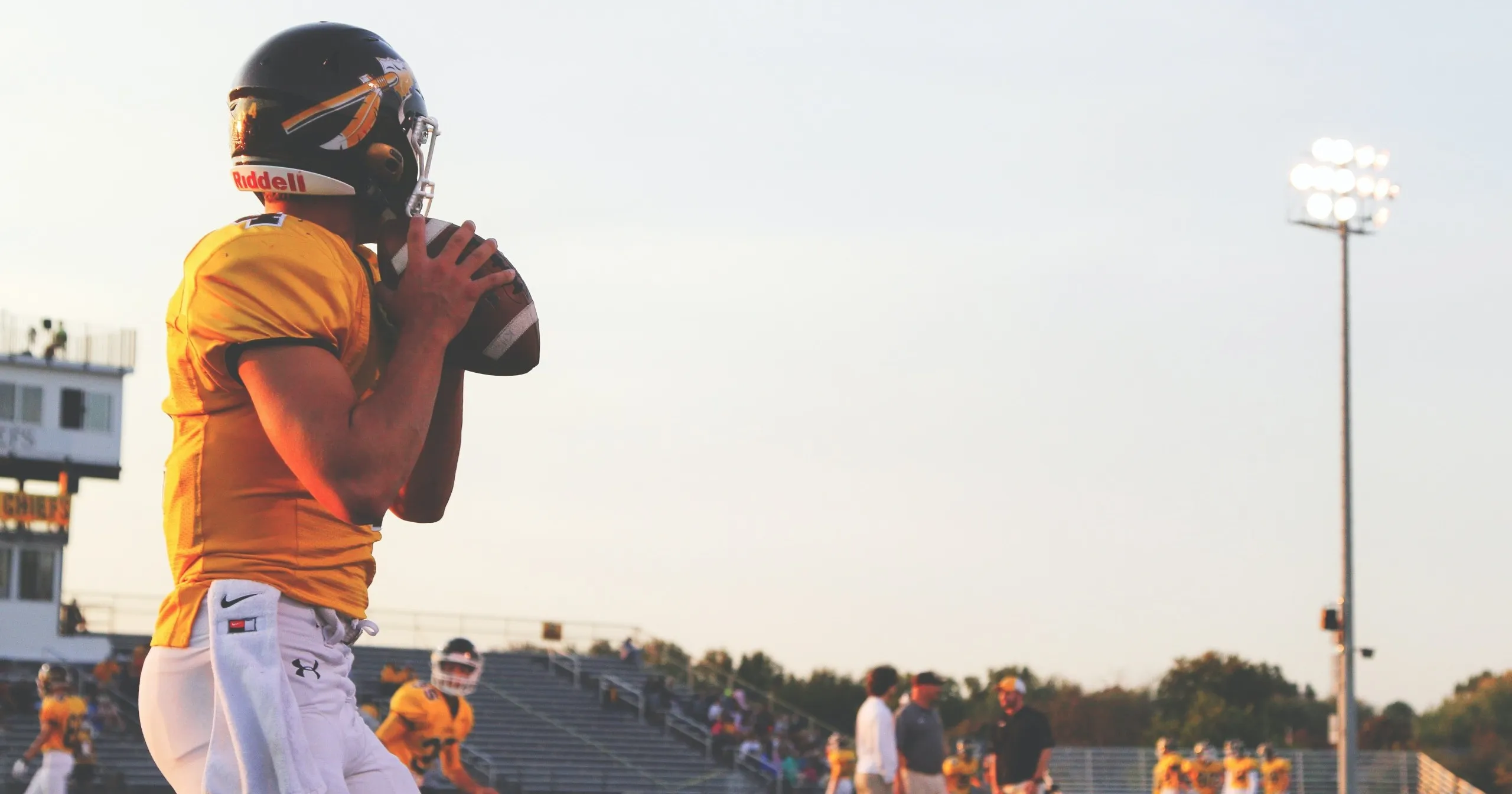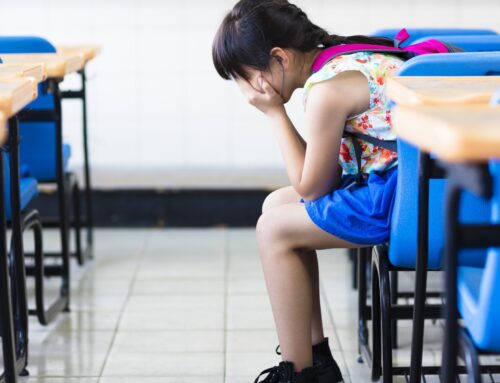
A large, academic-looking building full of the pursuit of knowledge, lies overshadowed by the sprawling gym building. The gigantic football field, surrounded by the track, abruptly interrupts rolling lawns of beautiful green grass. Across the street, the soccer field with its two goal nets sits expectantly, waiting for a crowd of excited students.
This is the picture of America’s schools, where academics and sports coexist.
“According to the Centers for Disease Control and Prevention’s 1991-2019 High School Youth Risk Behavior Survey Data, about 57% of high school students played on at least one school or community sports team in the past year,” EducationWeekly tells us.
School sports are important to many schools, students, and their families. Surprisingly, they can also be a somewhat controversial topic. For an activity that over 50% of high school students participate in, you would think that school sports would be an accepted part of life.
The shocker is that it’s not a settled issue.
“Participation in sports offers students a number of benefits,” SportsRec suggests. “Sports helps students stay in shape, learn to work as a team, and enhance their attractiveness as college applicants.”
On the other hand, an opinion piece from the New York Times counters, “Competitive sports is not about exercise. If it were, we’d have the fittest kids in the world. It’s about a fantasy with a short shelf life. If we want to build school spirit and teach kids about grit, hold a pep rally for the debate team. Those kids are training to rule the real world.”
As the debate rages on, what are the pros and cons of school sports?
Pros
Those in favor of school-based sports teams and events tend to be rather passionate about the subject, and rightfully so. We Americans love our sports!
What are some benefits of school sports?
1. One obvious item in the “pro” column is student health. Who can deny that exercise has health benefits? Aside from physical health, there are mental and psychological benefits to regular activity.
“As the issue of childhood obesity takes on more prominence, sports provide a way for kids to get the exercise needed to stay in shape,” SportsRec weighs in. “It offers students the opportunity to build confidence and leadership skills, and can encourage students to spend time with other students they don’t otherwise associate with. School sports can also be more affordable than those run by outside organizations, giving more students an opportunity to participate.”
Psychology Today also has some insights. “Too many tweens and teens are unable to handle the rigors of school. They are easily overwhelmed and crumble when they do poorly in class. In fact, parents often protect their children from defeat by fiercely advocating for them….Youth sports provide a nice balance since parents can’t protect athletes from defeat and hardship. It’s good for your kids to learn how to both lose and win.”
2. The Public School Review suggests, “Learning to work as a team is an invaluable skill no matter what your age or occupation. Sports are all about working together as a team to accomplish a common goal—winning the game. Not only must students work together, but they also need to learn how to communicate effectively.”
The community and teamwork inherent in sports offer students real-world skills.
“Kids who play team sports show increased cooperation and teamwork and foster a sense of community.…” explains ActiveKids. “Teammates learn to support each other through good games and bad, something that might be most important during a losing streak.”
3. For many kids, sports are a way to blow off steam, get away from a bad home situation, or even discover themselves. “Football offers kids from difficult economic and social situations a way out,” says Dr. David Gerier.
Students, especially teenagers, experience a lot of growth and changes. Sometimes they need an anchor, something to focus on, and a way to connect to others. Sports can offer that.
“Athletics offers teens a physical outlet to exert their troubles, anger, and emotions,” states the Public School Review, “As hormones alter teens’ moods and thoughts, competition fosters an opportunity for teens to interact with fellow peers, coaches, and mentors, while helping them understand their own abilities and talents.”
4. Studies have consistently shown that athletic pursuits and physical exercise can benefit students academically.
Edsys weighs in on this benefit: “Studies have shown a positive connection between sports activities and improved memory and cognitive functions of the brain. This means that students can perform better in academics if sports are made a part of their routine.”
A recent study by the University of Kansas indicates a link between physical activity and enhanced academic performance, according to the Public School Review.
“…the results of the study showed that student-athletes had higher GPAs and a 10% higher rate for graduating high school,” notes the Public School Review. “It is unclear exactly how physical activity boosted academic performance, but it could be increased blood flow to the brain.”
5. Playing school sports can teach life lessons. School sports offer students the opportunity to learn and practice traits that will come in handy not only in their immediate school life, but also later on in life.
Psychology Today agrees. “Combining sports and school requires an ability to self-regulate. Getting to practice on time with the proper equipment helps student-athletes learn to organize themselves and say no to other activities….Learning when to say no is a great skill to carry over to adulthood.”
Edsys notes that sports teach quality life lessons such as mental, physical, and tactical discipline. Students must learn to follow rules and experience practicing restraint. They also have to master obeying the coach and respecting decisions. All of these are good life lessons that can propel them toward real-life success.
Cons
1. School sports dramatically increase the chances of students suffering injuries or other negative sports-related effects.
Azcentral comments on this: “According to the National Center for Sports Safety, over 3 million children under the age of 14 incur some type of injury as a result of sports. These may occur as a result of practice or a competitive event.”
The fact of the matter is that students are young, and their bodies are still developing. Sports Empire notes, “The rigorous cycle of training, workout, and competitions provide stress to the body, leading to bodily injuries. It’s common for athletes to develop injuries because they tend to overwork their muscles and bones. Impact and trauma also play a huge role in obtaining sports injuries.”
2. School sports is mostly an American phenomenon. Other countries prefer students to focus on their academics.
“Sports are a big part of American school culture….” the Mountaineer tells us. “In Europe, sports are not tied in with the school….While here, sports play a major role in our education, social life, sometimes even a student’s future.”
With over 50% of students participating in school sports, American schools heavily invest in their athletic departments. Meanwhile, American students are falling behind on the global academic scene, according to Pew Research.
In the words of The Atlantic, “The United States routinely spends more tax dollars per high-school athlete than per high-school math student—unlike most countries worldwide. And we wonder why we lag in international education rankings?”
3. Many opponents to school sports think they bring the wrong focus to the school atmosphere.
The New York Times explores this idea, saying, “By mixing sports and academics, we tempt kids into believing that it’s O.K. if they don’t like math or writing — that there is another path to glory. Less obvious is that this path ends abruptly, whereupon they get to spend 50 years in an economy that lavishly rewards those with higher-order skills and ruthlessly punishes those without.”
The Times sees it this way: “Imagine if medical schools dedicated hours of every day (and a chunk of their budgets and staff) to the culinary arts — to perfecting tiered wedding cakes and artisan breads. We could argue that this approach keeps med students from dropping out, but we would sound insane.”
4. Many experts are concerned with the undue emotional and mental pressure that school sports can place on children’s minds, especially in their younger years.
Psychology Today explains, “The weight of expectations is a crushing burden on the shoulders of young athletes. Imagine your children having to put on a 50-pound weight vest when they enter the field of play and you’ll get a sense of what they feel and how it will make them perform.”
According to Active Kids, when it comes to school sports, most kids start early. By the age of six, 60% of boys and 47% of girls are on a team. Competition, parental pressure, and the desire to please are driving factors for young athletes. Overuse, or pushing their bodies farther than they should, is becoming a common problem.
“An overuse injury is microtraumatic damage to a bone, muscle, or tendon that has been subjected to repetitive stress without sufficient time to heal or undergo the natural reparative process….The incidence of overuse injuries in the young athlete has paralleled the growth of youth participation in sports. Up to 50% of all injuries seen in pediatric sports medicine are related to overuse.” This excerpt from a report from the American Academy of Pediatrics outlines the serious concern that medical professionals have concerning this issue.
5. Cost is one of the biggest factors that concerned citizens bring up in relation to school sports. In many districts, the spending for athletics exceeds the budget for other school activities, including classroom time.
A report by Knight Commission on Intercollegiate Athletics found, “Median athletics spending per athlete at institutions in each major athletics conference ranges from 4 to nearly 11 times more than the median spending on education-related activities per student.”
Cost is an issue for students too. The Public School Review points out that some schools require students to buy the uniforms and equipment needed to play. Some families simply can’t afford this. Many concerned citizens think that sports, as a publicly-funded school activity, should be open to all students. U.S. News notes, “Only 30 percent of students in families with annual household incomes of less than $60,000 played school sports, compared with 51 percent of students in families that earned $60,000 or more a year.”
Where We Are
School sports are an incredibly entrenched American institution that will probably not be going anywhere for a while. But, as with many traditions of education, “it’s always been done” isn’t a great reason to include anything in our students’ lives. As we examine the evidence, it’s essential to consider a sensitive topic like this from all angles. To make the best decision for our children, we must set aside our preferences and think objectively.
After all, isn’t all of this for them?





[…] 50% of high school students play team sports. If your child is an athlete, you might want to do some research before they jump into dual credit […]
[…] Pros and Cons of School Sports – NWEF […]
[…] Pros and Cons of School Sports – NWEF […]